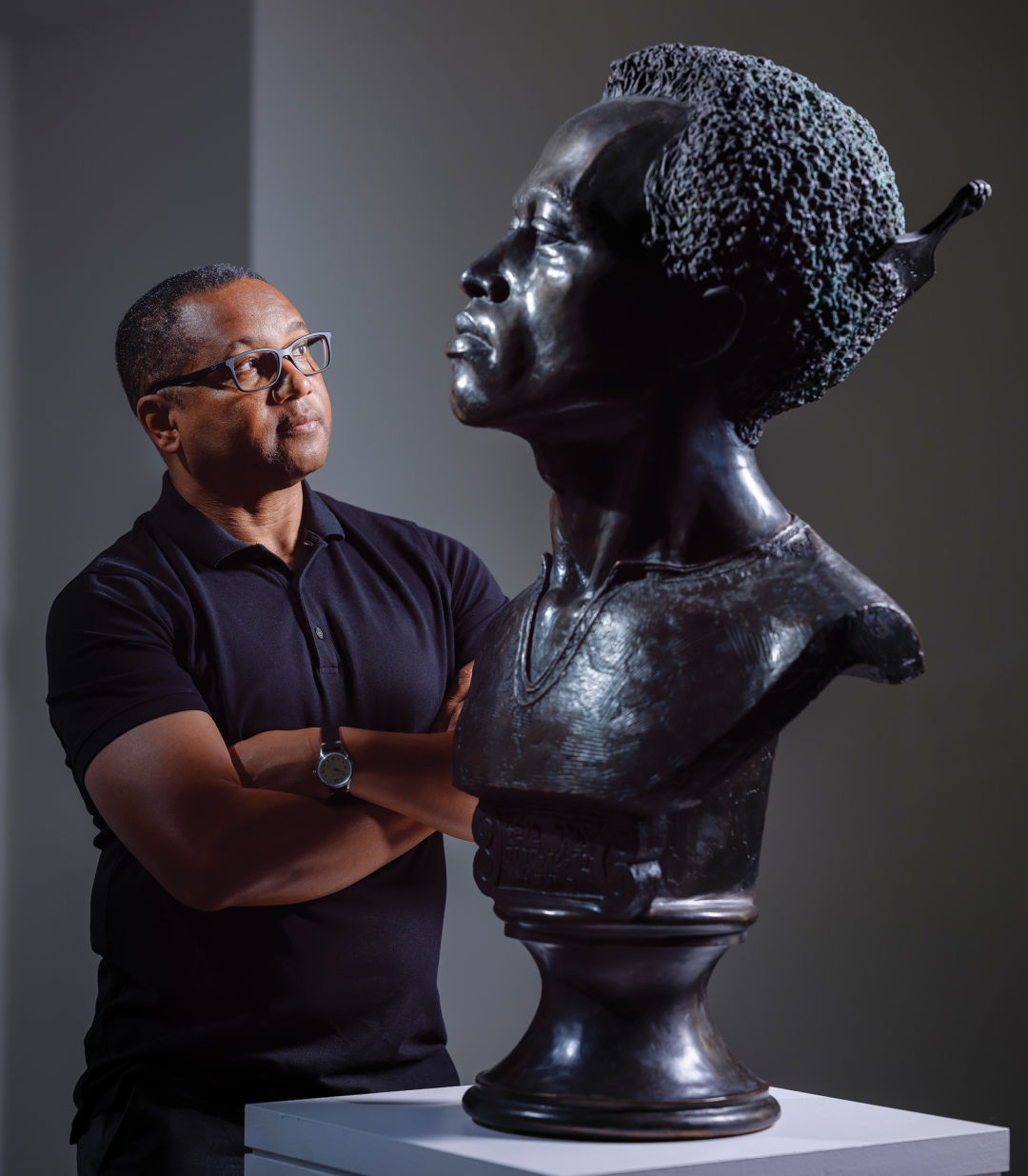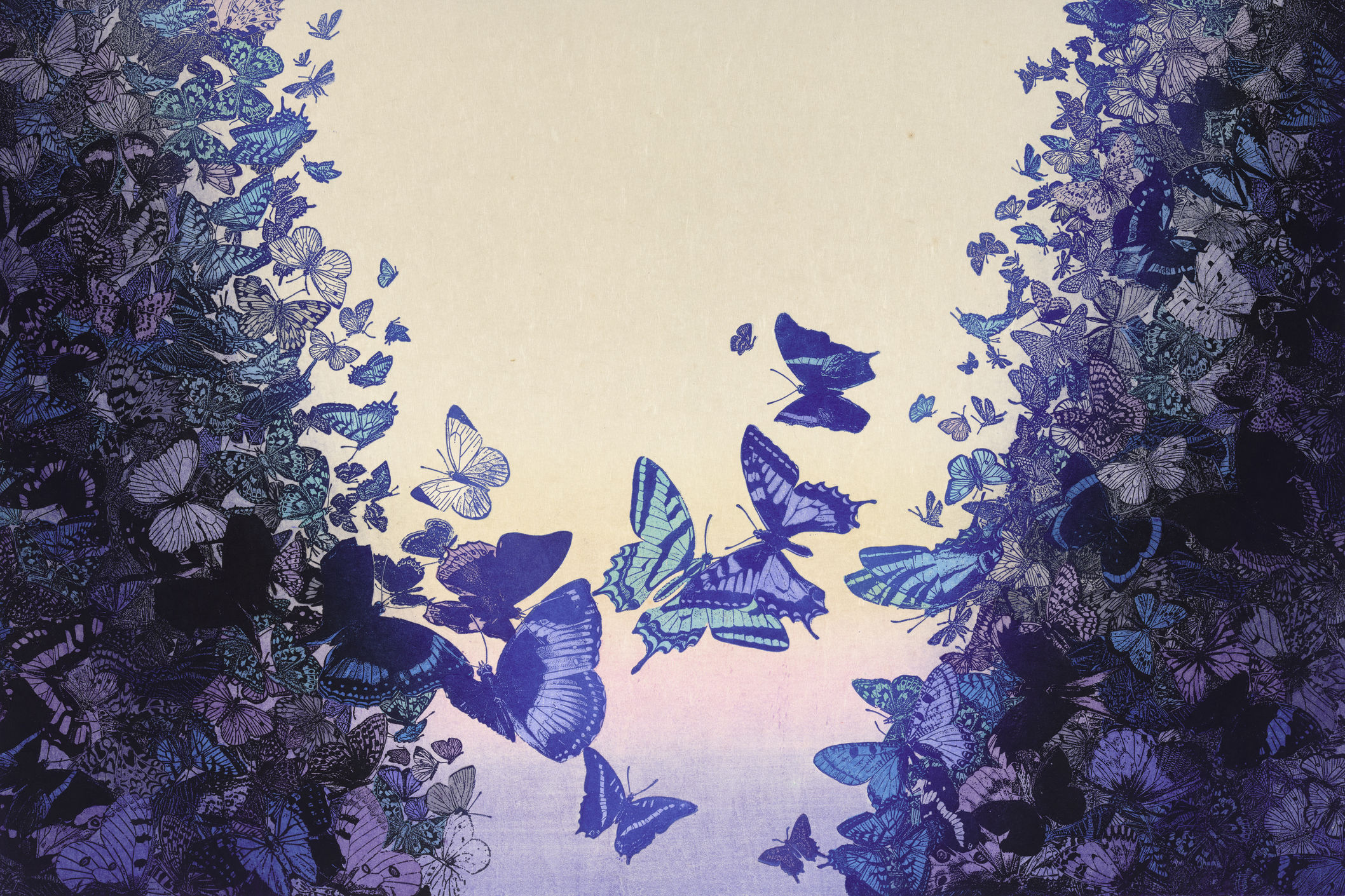This Portlander Wants to Get More People of Color into the Art Museum

John Goodwin at the Portland Art Museum, with a bronze bust by Kehinde Wiley
Image: NASHCO PHOTO
Like the walls of his childhood home in North Carolina, those of John Goodwin’s two-story loft in Northwest Portland seem to exist solely for supporting art—the ceiling an afterthought. The onetime MTV writer and art consultant and his partner, artist Michael-Jay Robinson, share a 500-plus-piece collection centered primarily on black American artists and figures, work that is commonly undervalued compared to its white-created equivalents. While employed as the Trail Blazers’ premium-services director (read: the guy who hooked you up in the luxury suites) Goodwin, 58, drew from his personal collection for a 2016 show on representations of black culture in America that he guest-curated at Portland’s Upfor Gallery. His push for inclusion in collecting went pro in August, when he became the Portland Art Museum’s major gifts officer, a key fundraising role that ought to help him in his overarching goal: ensuring art, and the institutions that house it, can make everyone feel at home.
There were seven kids, so a lot of us. I was the last. My mom was really busy doing social work, and to keep me busy we would go to auctions and yard sales. I would look through all the stuff, and it was mesmerizing. I would just calm down. I had ADD—I know now that’s what it was—and she was figuring out a reprieve from my manicness. That’s when I first started looking at art.
We had a small house, and when my mom would hang up landscapes we would have this beautiful view of places all over the world. It was never really good art, but it gave us an impression of things we could do in the future or places we could visit.
I collect images that have black people in them. And it’s typical: you buy what you’re comfortable with, things that look like you or your family. I’m trying to move forward with not having that be a necessity. There are going to be other works I hope to collect that don’t have to have a black character in them, doesn’t have to be by a black person. I am looking at younger, contemporary artists of color: Asian, Latino, African American.
I’m working to get more people of color into the museum. I used to work at the University Club, and the Portland Art Museum was the view out my window. Some school days, the buses would line up along Broadway for kids to go to the museum, and it was the most insane thing: If it was a predominantly white school, the kids would just prance all the way to the museum. And with an African American school, they’d look around and be like, “This is not my area.” I could feel it. That’s an amazing contrast in the difference in how they feel just getting off the school bus. We need to change that; everybody should be comfortable going to a museum.
The show at Upfor went from typical African American imagery that we know, artists like Ralph Chessé and Romare Bearden, to more abstract images, on to dramatic imagery and photos with a black person in them, to landscapes by black people—showing you don’t necessarily have to have a black face in the work for it to be beautiful.
I brought one of my hitching boys (lawn jockeys), a symbol of slavery, and put it in the show as a sculpture, and the kids—who were about the same height as it—were fascinated. So I would have to explain that it shows where I came from: a time when people put them in their yards and would want you to know, “I want you to be back in this period.” For me, to see it and know that I have definitely gone beyond that makes me feel better. I like other people to see it and know that there’s so much out there for you to do. You don’t have to allow anyone to tell you that you can’t do it.
I invited Blazers players Damian Lillard’s and C. J. McCollum’s moms to the gallery early one day. When I got there, the gallery director told me someone had written in red lipstick “Fuck this” in the window. She erased it before these ladies came because she didn’t want them or me to be offended. I actually wanted to see it. It was crazy that, in 2016, people don’t want to see black stuff in a window. Why would you waste your lipstick on something like that?
If you start a dialogue with someone you know you’re completely opposite in thinking from, it’s a difficult process. But if you look at a piece of art together, you can find just about anything you can relate to, even the artist’s technique. You can find something to communicate about in a positive way. You can get back to your other stuff later, but you’ve already made a connection.




